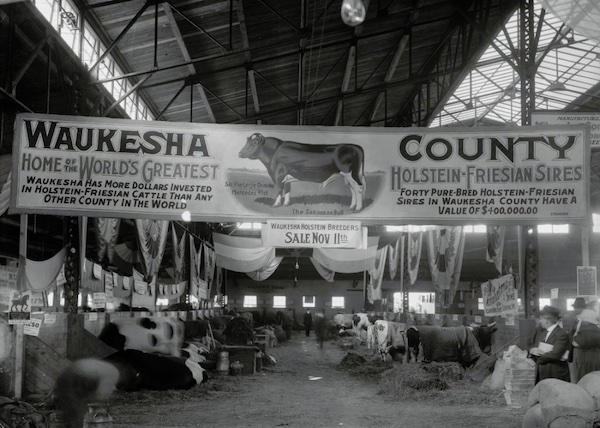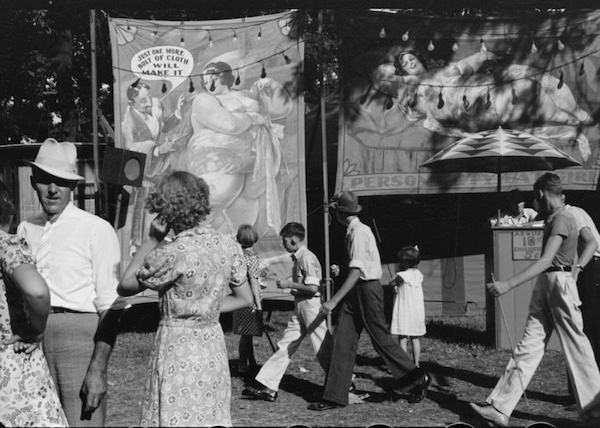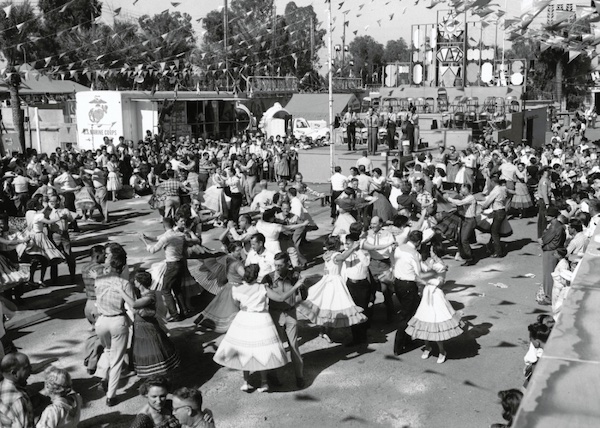State Fairs are kicking off the 2022 season across America, many after having been closed the past two years due to Covid-19. For so many families, there is just no better way to wrap up a long, hot summer than a couple of deep-fried Twinkies, a rickety carnival ride, and some dusty livestock pens! Below is a little history and some fun facts about the nostalgia-filled tradition.
I should note… My wife recently sent me an article about a woman deep in southwest Virginia, that won first, second and third place for best cookies at her county fair. She also swept all three awards for candy and for savory bread. In fact, she won the blue ribbon for cake, pie, brownie, sweet bread, and best overall baked good (that was strawberry fudge.) It didn’t stop there. She also won for canned tomatoes, canned corn, pickled peppers, sauerkraut, relish, spaghetti sauce, and both jelly and jam. Then she took top honors in quilt embroidery. Last year at a different county fair, she won 40 ribbons! After the Virginia Kentucky District Fair posted these utterly dominating results to Facebook the lady’s name “Linda Skeens” went viral. Everyone on the internet was contacting her wanting her to cook or cater for them. She simply replied, “thanks, but I’m plenty busy cooking for my own family.”
History of Fairs: The tradition of fairs has roots going back to ancient times. The earliest fairs, such as the great Aztec market that Spanish conquistadors found on the present-day site of Mexico City, were created to solve distribution problems by bringing merchants and consumers together in one spot. Similarly, the ancient Romans held “feriaes,” which typically coincided with holy days and included games, competitions, feasts, and other festivities. Historically, fairs were located on major trade routes and gave people the chance to show off their skills and crafts, and sell or trade their goods. In the days when people did not travel much, fairs were also an opportunity to see different areas and socialize with others.
America’s First Fair: The first fair held in America happened before it was even a country in the historic old town of York in 1765, eleven years before the nation was founded. At that time, the York Fair existed as a two-day agricultural market on the town commons, now known as Penn Park. After 50 years, the original series of historic fairs came to an end. Thirty-six years later, in 1851, the fair was revived and is still held today in York, Pennsylvania. Interestingly, Pennsylvania does not have an official state fair.
America’s State Fair Origins: Modern American fairs grew out of an 1807 idea by Elkanah Watson, a banker and farmer in Pittsfield, Massachusetts. He decided that the best way to convince other farmers to raise sheep was to show them his own animals. The townspeople were so impressed with Watson’s idea that they gathered together to form the first Berkshire Cattle Show in 1810. Throughout the next decade the show expanded to include men’s and women’s manufacturing exhibits, a parade, and a dance. The fair idea quickly spread throughout the United States, and by the time of the Civil War, agricultural societies in 25 states were holding annual fairs. The tiny event held in Pittsfield went on to become the Massachusetts State Fair, which has since merged with Connecticut, Maine, New Hampshire, Rhode Island, and Vermont to form “The Big E,” formally known as The Eastern States Exposition. The event is billed as “New England’s Great State fair” and is now the largest agricultural event on the eastern seaboard and the fifth-largest fair in the nation.
First State Fair: With the success of county and local agricultural fairs, state governments quickly realized that fairs could be used to highlight the growth and achievements of their states. New York held the first state fair in September 1841, and the ongoing tradition is now the oldest and one of the largest in the US. The fair averages over 1 million visitors every year over the course of 18 days, wrapping up on Labor Day. The second state fair was in Detroit, Michigan, which ran from 1849 to 2009.
Biggest State Fair: The grand State Fair of Texas is the largest in the U.S., attracting a whopping 2.25 million visitors annually. The Dallas location, Fair Park, is actually a National Historic Landmark and teaches visitors all about the history of the Lone Star State. While, Texas may have the best-attended state fair, the Minnesota State Fair is nothing to sneeze at. In 2019, the fair set a new attendance record of 2.13 million visitors. That’s more than one third of the state’s population. The Texas fair attendance, in comparison, averages about 12.5 percent of the state’s population.
As Big As a City: The Oregon State Fair is so massive that each year the fairgrounds temporarily become the fifth-largest city in the state. In 1967, just a month before opening day, an arson fire wiped out 40 percent of the exhibition space. But the event went on as scheduled, housed in tents donated by community groups and organizations.
Alaska’s Fair Is Older Than the State: The first Alaska “State” Fair was held in 1936, 23 years before Alaska gained official statehood in 1959.
Tulsa State Fair: You may be thinking that Tulsa isn’t a state…and you’d be right! Oklahoma has two state fairs each year, the Tulsa State Fair and its smaller rival, the Oklahoma State Fair. What began as the Tulsa County Free Fair is now the largest family event in the state with an estimated attendance of nearly 1.2 million visitors every year.
Watch Animals Being Born in Maryland: At the Maryland State Fair, there is a birthing center where visitors can watch cows, pigs, sheep, and baby chicks being born every day.
Cows Are the Artists in Montana: The Montana State Fair hosts the Ole Cow Lick Contest every year, where salt licks are judged in two categories: hand carved (carved by humans) and nature carved (carved by cow tongues).
Iowa Replaced Rolling Pins with Rubber Chickens: The Iowa State Fair used to have a women’s rolling pin throwing contest, but after a few too many mishaps, the kitchen implements were deemed too dangerous. Now women throw rubber chickens filled with sand instead for a safer, more ridiculous contest.
Elvis Lost a Fair Talent Contest: Legend has it that Elvis sang in the youth talent show at the Mississippi-Alabama Fair and Dairy Show, and not only did he not win, he actually came in fifth place. To be fair, the King of Rock n Roll was only 10 at the time.














